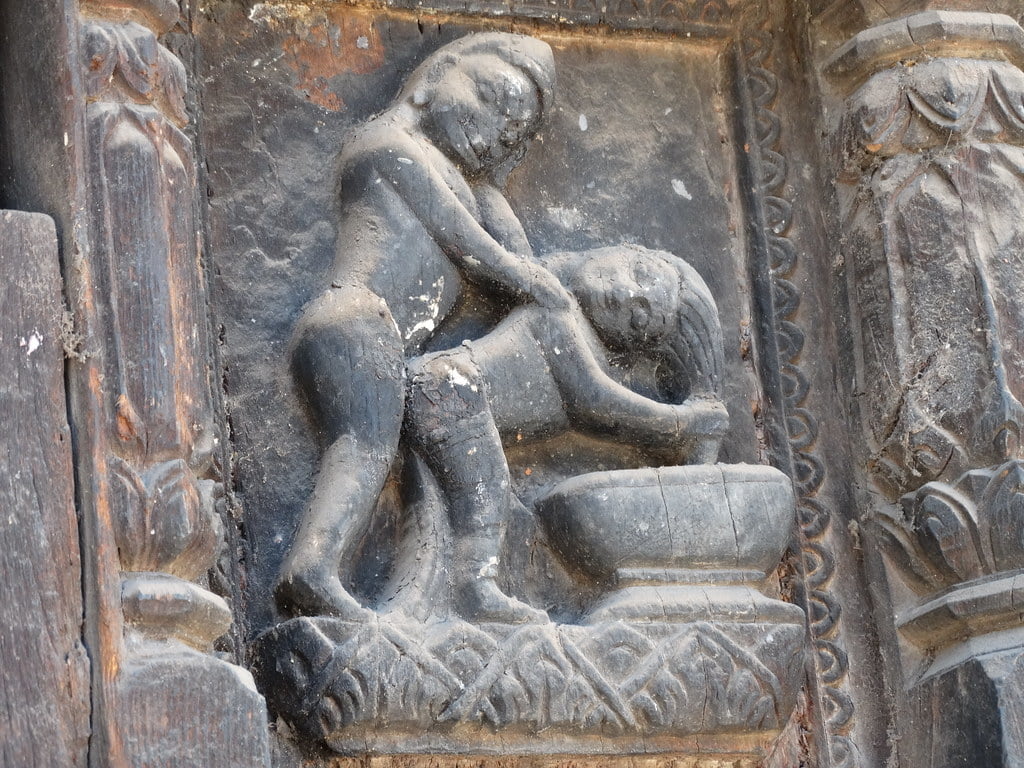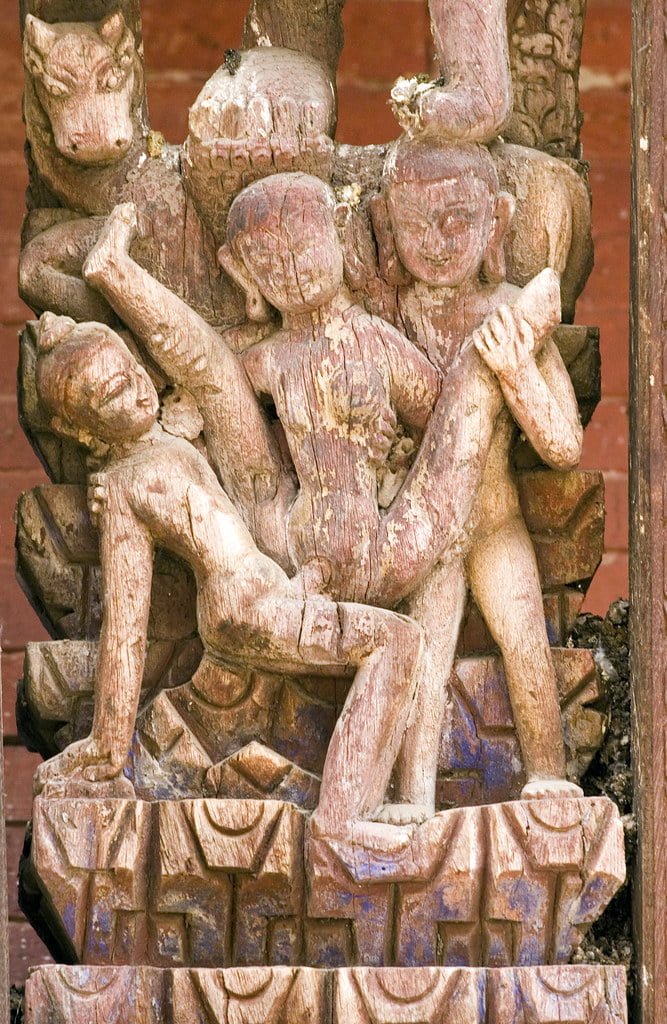Sacred and Sensual: Uncovering the Erotic Art of Nepals Temples
Nepal is not only known for its stunning landscapes and ancient temples but also for its rich cultural heritage, including its unique Tantric Buddhist art. Tantric Buddhism, also known as Vajrayana Buddhism, is a branch of Mahayana Buddhism that originated in India and later spread to Nepal and Tibet.
In Nepal, Tantric Buddhist art is prominently displayed in various temples and monasteries, showcasing intricate and symbolic artwork that represents the spiritual teachings of the Buddha. These artistic expressions often depict deities, mandalas, and yantras, which are visual representations of sacred symbols and concepts in Tantric Buddhism.
One of the distinctive features of Tantric Buddhist art in Nepal is the use of explicit sexual imagery. Erotic and sensual iconography is utilized as a metaphor for the union of wisdom and compassion, symbolizing the transcendence of dualities and the attainment of enlightenment. These artistic expressions are not intended to be vulgar or gratuitous but rather serve as a powerful visual aid to spiritual practice and understanding.
The carvings and paintings found in Tantric Buddhist art in Nepal are not limited to temples and monasteries but can also be seen in sacred caves and pilgrimage sites across the country. These artworks often depict wrathful deities and fierce protectors, representing the transformative and transformative aspects of the spiritual path.
The craftsmen responsible for creating these intricate artworks are highly skilled artisans who have inherited the knowledge and techniques from their ancestors. They spend years perfecting their craft, using traditional tools and methods to meticulously carve, paint, and sculpt these masterpieces.
Despite the beauty and significance of Tantric Buddhist art in Nepal, it is important to approach it with respect and reverence. Visitors should take the time to understand the symbolism and meaning behind the artwork, as well as the cultural and religious context in which it exists.
In recent years, there has been a growing interest in Tantric Buddhist art from Nepal, with collectors and art enthusiasts recognizing its unique aesthetic value and spiritual depth. However, it is crucial to ensure that any acquisition or display of these artworks is done ethically and with proper understanding of their cultural and religious significance.
What Is the Art of Tudal Nepal?
The art of Tudal in Nepal is a unique form of erotic art found in the country’s temples, showcasing explicit carvings and sculptures that are integrated into the temple architecture. This form of art has been an integral part of Nepalese temple architecture for centuries and is known for its distinct charm and humor, setting it apart from other forms of erotic art.
What Is the Controversy with Khajuraho Temple?
The controversy with Khajuraho Temple is its explicit sexual imagery, which is a metaphor for the union of wisdom and compassion in Tantric Buddhism, but has also raised questions about societal attitudes towards sexuality. The temple’s carvings are not intended to be vulgar but rather serve as a powerful visual aid to spiritual practice and understanding.
Temples in Kathmandu: A Unique Blend of Spirituality and Erotic Carvings and Sculptures
Kathmandu, the capital city of Nepal, is renowned for its rich cultural heritage and is often referred to as the “city of temples.” These temples not only serve as sacred places of worship but also showcase a unique blend of spirituality and erotic art.
One cannot help but be intrigued by the presence of explicit carvings and sculptures depicting various sexual acts within the temple complexes. Unlike the refined and intricate erotic art found in the famous Khajuraho Temples of India, the erotic carvings in Nepal are relatively crude, yet they possess a distinct charm and humor that sets them apart.
Known as “Tudal,” this form of erotic art has been an integral part of Nepalese temple architecture for centuries. These carvings can be found not only on the facades of ancient temples and palaces but also on the roof struts, showcasing a whimsical realm of amorous beings indulging in acts that defy societal norms.

The Depiction of Eroticism in Nepalese Temple Art
While India is renowned for its erotic temple art, Nepal’s contribution to this genre has often been overlooked. In an effort to shed light on this lesser-known aspect of Nepalese art, a book titled “Sacred Love: Erotic Art in Temples of Nepal” has been compiled, offering readers a comprehensive exploration of this fascinating subject.
Unlike scholarly or abridged materials that focus solely on the iconography or architectural aspects of these artworks, “Sacred Love” takes a more holistic approach. The author, through multiple visits to Nepal and interviews with craftsmen, sociologists, historians, priests, and the general public, delves into the purpose, symbolism, and societal attitudes surrounding erotic temple art.
One of the reasons for the presence of erotic carvings in Nepalese temples is believed to be related to fertility. According to the book, these carvings were intended to encourage sexual desire in order to increase the population, particularly the number of boys who would later serve in the army. This connection between eroticism and procreation highlights the cultural significance and practical implications of these artworks.

Another intriguing reason behind the inclusion of erotic carvings in Nepalese temples is the belief that they serve as a means of deflecting negative energy. The intricate carvings are said to contain mantras or chants that protect the temple and its divine power from negative influences. This spiritual aspect adds another layer of meaning to the erotic art, emphasizing its role as a form of sacred protection.
The presence of eroticism in Nepalese temple art also raises questions about societal attitudes towards sexuality. While some may view these carvings as taboo or controversial, it is important to understand that they are deeply rooted in mythology, legends, and traditions. By appreciating the immense creativity of mankind, readers can gain a deeper understanding of the socio-economic baggage that often accompanies any cultural tradition.
The Preservation and Study of Nepalese Temple Art
Since Nepal opened up to tourism in 1951, these erotic carvings have fascinated visitors from around the world. The Durbar Square in Kathmandu, a UNESCO World Heritage site, is particularly renowned for its collection of temples adorned with explicit carvings. Visitors are captivated by the whimsical and sometimes outrageous scenes depicted in these carvings, which evoke a sense of curiosity and wonder.
It is not uncommon to see young couples whispering sweet nothings to each other under the gaze of these eternal lovers, while jaded tourists capture the unexpected explicitness with their cameras. The fusion of spirituality and erotic art in the temple complexes of Kathmandu creates a unique and unforgettable experience for visitors.
The preservation of Nepalese temple art is a challenging endeavor. These delicate carvings are exposed to the elements, and over time, they can deteriorate or be damaged. It is important to note that the devastating earthquake of 2015 had a profound impact on these temples and their erotic art. Many were damaged or destroyed, leading to a loss of invaluable cultural heritage. The aftermath of the earthquake saw efforts to restore and preserve these temples, highlighting the importance of safeguarding Nepal’s unique artistic legacy.

